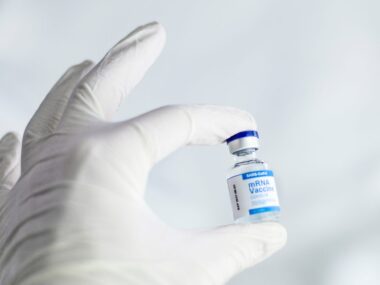Rituximab, chemotherapy elevate PF risk after COVID-19: Study
Factors include being older, male, preexisting lung conditions, breathing support
Written by |

Use of cancer chemotherapy agents or rituximab to treat autoimmune diseases was associated with an increased risk of pulmonary fibrosis (PF) in people hospitalized with COVID-19, according to a large-scale U.S. study.
Exposure to these medications, along with anti-inflammatory corticosteroids and amiodarone, used to treat certain heart rhythm disorders, increased PF risk, regardless of a COVID-19 diagnosis, data showed.
“This information is of public health significance for clinicians and patients navigating treatment decisions together and would be valuable in guiding future research,” the researchers wrote in “Pharmacotherapy and pulmonary fibrosis risk after SARS-CoV-2 infection: a prospective nationwide cohort study in the United States,” which was published in The Lancet Regional Health – Americas.
PF, marked by lung tissue scarring, or fibrosis, often occurs after a hospitalization for infection with SARS-CoV-2, the virus that causes COVID-19. Identified risk factors that influence PF’s development in COVID-19 patients include older age, being male, preexisting lung conditions, and the need for breathing support via ventilation.
However, certain medications given for diseases before infection may also increase risk after COVID-19, while others may lower it.
Therapies’ links to PF after COVID-19 infection
Scientists at the University of Chicago in Illinois collected data from a national electronic health record data repository to determine the risk of post-COVID-19 PF among hospitalized adults who’d been exposed to certain medications before contracting COVID-19.
Of the 5,923,394 patients diagnosed with COVID-19, 452,951 were hospitalized with no preexisting PF. The presence of PF was assessed at least 60 days after a COVID-19 diagnosis.
All selected participants were predominantly white, non-Hispanic, and most were female. Those exposed to each therapy were matched with COVID-19 patients without pre-exposure. The researchers focused on four distinct types of medicines — cancer chemotherapies, corticosteroids, the immune B-cell-depleting therapy rituximab, and amiodarone.
Patients treated with rituximab before COVID-19 were 2.5 times more likely to develop PF after contracting COVID-19 compared with unexposed people, analyses showed. This statistically significant result remained after adjusting analyses for vaccination status or COVID-specific treatments received during hospitalization.
Pre-exposure to cancer chemotherapies increased PF risk after COVID-19 by 1.6 times, a result also unaffected by adjustments. Corticosteroid pre-exposure increased PF risk by 1.2 times. No significant association between amiodarone and post-COVID-19 PF was found.
Post-COVID-19 PF risk associated with using these medications was independent of age, suggesting it “may not be limited to specific age groups … [highlighting] the importance of considering the potential for these medications to increase the risk of post-COVID-19 fibrosis in all individuals,” the scientists wrote.
PF risk associated with rituximab pre-exposure was 1.9 times higher with a more lenient follow-up of 30 days and 2.6 times higher with a more strict follow-up of 90 days when a PF diagnosis was made more confidently.
Similarly, pre-exposure to chemotherapy was associated with a 1.4 times increased PF risk at 30 days and with a 1.6 times higher risk at 90 days, “indicating that when the diagnosis of pulmonary fibrosis is most certain (at 90 days) the association of rituximab exposure and chemotherapy exposure and new pulmonary fibrosis diagnosis is greatest,” the researchers wrote.
Risks associated with exposure to corticosteroids and amiodarone remained similar across both follow-up times.
Risks without COVID-19 diagnosis
Overall, the rate of a new PF diagnosis in 1,240,461 people without COVID-19 was half that of people with COVID-19.
PF risk in these people was slightly higher after exposure to all four therapies, “indicating that exposure to these drugs is associated with greater rates of pulmonary fibrosis independent of COVID-19 diagnosis,” the researchers wrote.
Previous exposure to rituximab increased PF risk by 1.7 times, a lower risk than that seen among COVID-19 patients. Chemotherapy agents increased PF risk by 1.7 times and corticosteroids by 1.3 times, which were similar to the risks seen in COVID-19-positive patients. Unlike those diagnosed with COVID-19, being exposed to amiodarone increased PF risk by 1.4 times.
“The use of rituximab or cancer chemotherapeutic drugs was associated with an increased risk of pulmonary fibrosis in patients hospitalized with COVID-19,” the researchers wrote. “It is important to note that COVID might not necessarily have been the pulmonary fibrosis causing exposure in the COVID population, as study participants taking these therapeutics may have been at higher risk of developing pulmonary fibrosis regardless of COVID.”







